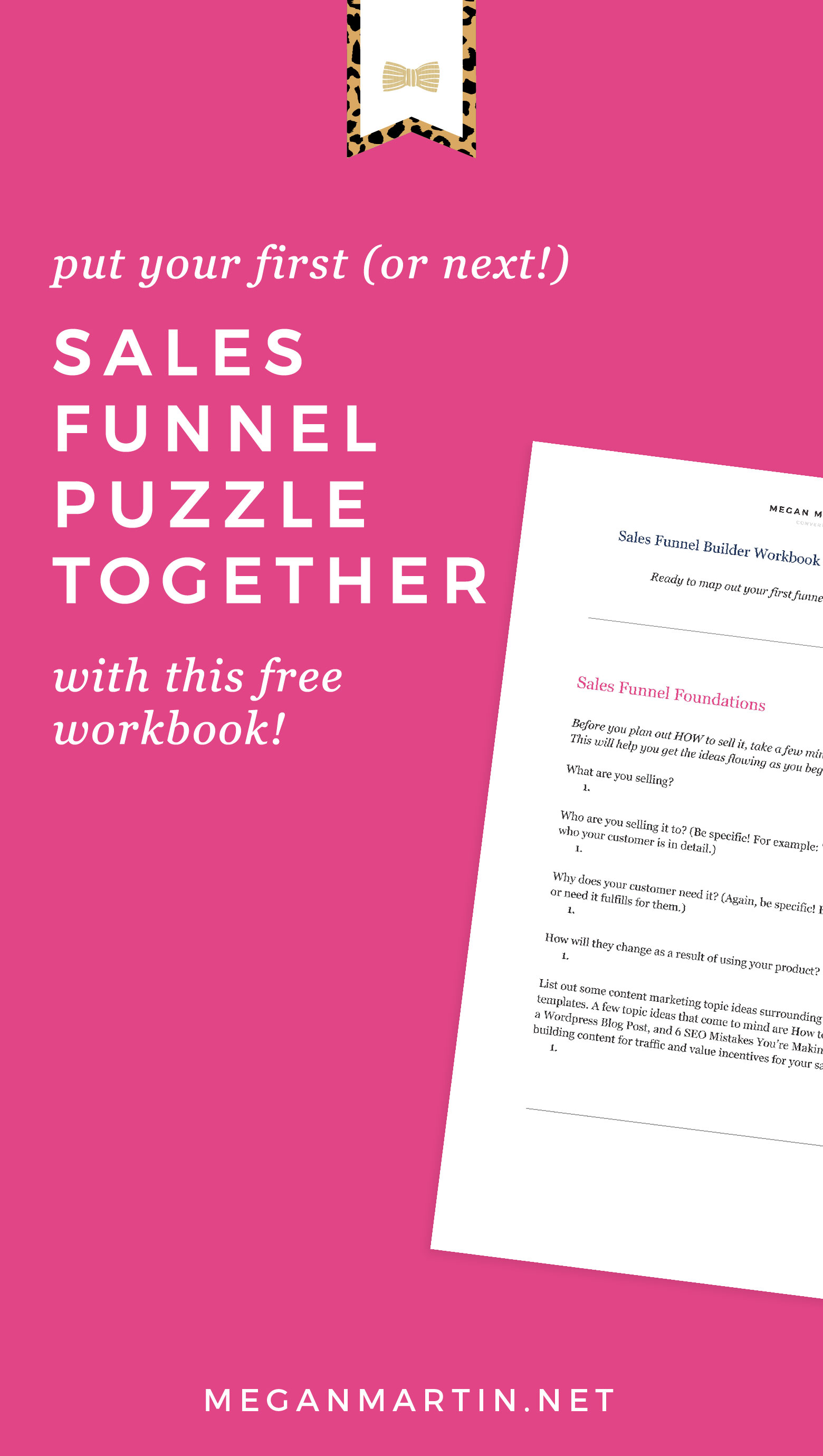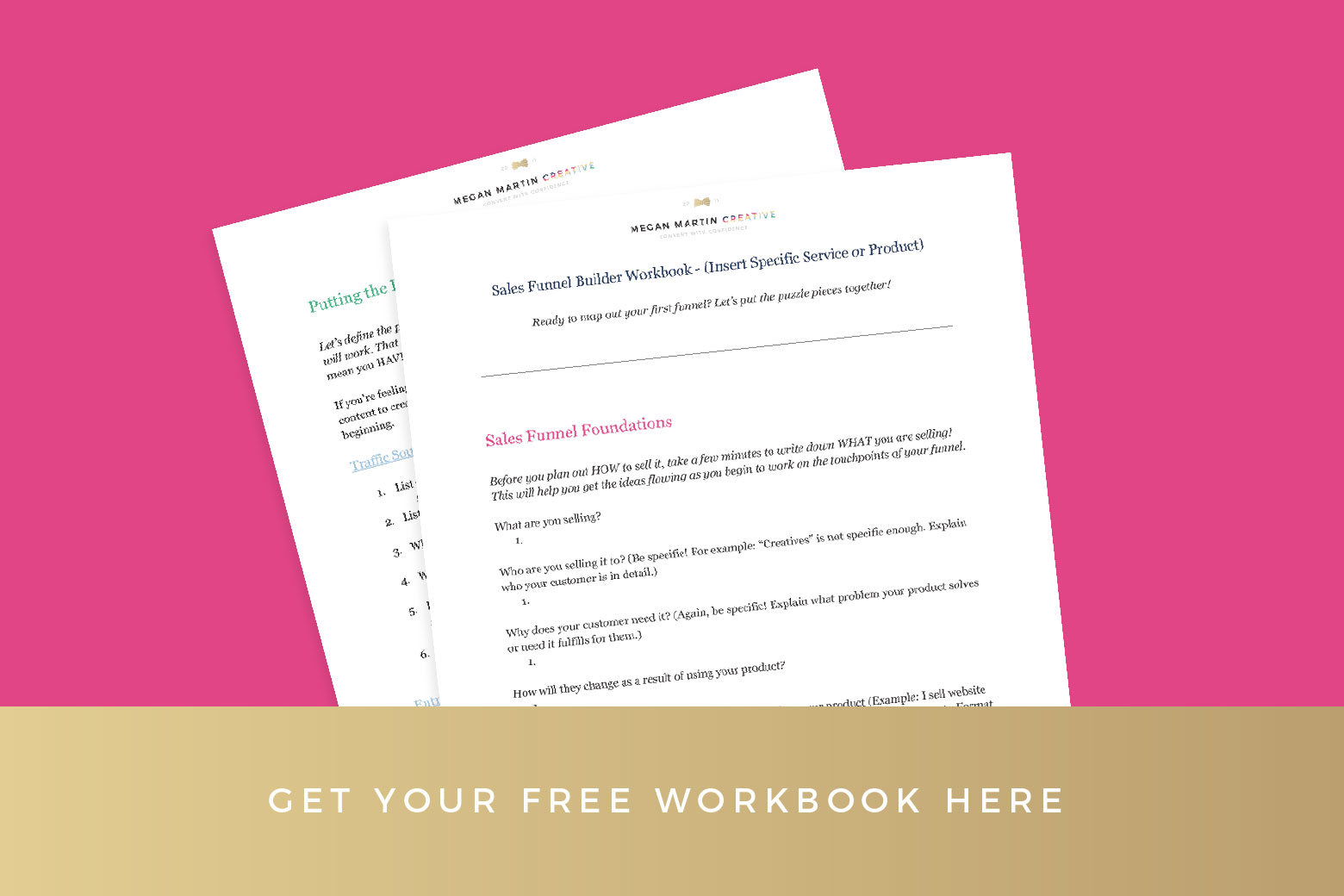Sales funnels don’t come in a one size fits all template. The exact pieces of your sales funnel puzzle will be determined by your unique offerings, pricing, and preferences in selling.
Love live video? You might want to consider a webinar or social challenge-based funnel. Prefer pre-recorded? You could try a video series based funnel. Does video make you want to cry, but you love writing? There’s an email series funnel! Sales funnels can be quick and straight to the point to sell one specific product or they can be built to drip out longer-term as you move your customer up the ladder of your products and offerings. You can build a tripwire sales funnel to help you grow your email list and offset your advertising spend. And you can build a combo sales funnel out of these ideas and more!
Those ideas? They are just the tip of the iceberg of what you can do with sales funnels. But at their core, all sales funnels all have a few key similarities. They start with a traffic source, lead to an entry point, follow up with value and communication (aka the pitch), funnel to a sales page, and close the deal with checkout.

core funnel puzzle pieces
01. traffic source
This is the first piece of the puzzle, but don’t feel pressured to be in all places at all times. The best thing you can do for traction when it comes to traffic is to focus your efforts on one or two options to excel in at first. Then you can start adding more traffic sources if desired! Your medium of traffic is up to you, but here are a handful of popular options:
- Write articles for your personal blog and share them to Pinterest and Social Channels (you can also send ads straight to your blog posts, too!)
- Write articles for other blogs in your industry
- Social Media – Insta, Facebook, Twitter, Etc!
- Advertising – Social Media Ads, Google Ads, and paid promotional online opportunities
- Media opportunities like podcast and tv features
- Joint Venture (JV) Webinars and Collabs – Buddy up with other industry peers who offer complementary products & services to your own to broaden your reach to their primed audiences
02. entry point
Once you have the traffic, your goal is simple, get your leads to officially enter the funnel and build awareness about you and what you have to offer. Typically, the entry point happens with an email sign up form to grow your list and often come with the incentive of some sort of free value like a download or access to a webinar. Here are a few popular entry-point ideas:
- An Opt-In (aka email sign up form) embedded in a blog post. This is great if you are blogging to capture leads who are reading your content and interested in what you are sharing!
- A landing page with an opt-in. Landing pages have one goal in mind: Convert. The best performing landing pages have no links elsewhere (like to your main site or blog) and clearly convey the value of the incentive for opting in.
- Quizzes are quickly becoming very popular entry points! They are a fun and engaging experience for your ideal customer and are a great way to establish the like, know trust, factor right off the bat!
- Recently, I’ve been seeing a trend pop-up that circumvents email sign-ups. I can’t give insight on how well they convert, but I’ve seen quite a few B2B educators create a highly engaging and in-depth blog post series with each post ending in a bold call to action button leading to the next post in the series. At the end of the series (aka the free value incentive), they pitch their offering with a final call to action button leading to a sales page. I haven’t tried it, but it is an interesting alternative you could test.
03. value & communication
This puzzle piece is all about connection and moving your potential customer through the awareness and interest funnel steps. Once your lead has entered the funnel, the next thing that happens is the free incentive you offered in exchange for their email opt-in gets delivered to their inbox. Remember that principle of Reciprocity? Here’s where it comes in strong!
Depending on what type of funnel you are working with, you may also send a sequence of emails that warms up your lead to what you are going to pitch or remind them to show up live if you are doing a webinar or free challenge. Your free incentive and initial touch-points of communication help to move your potential customer through the awareness step. As you shift from introducing yourself and giving value to presenting your pitch as a solution to their needs, you enter the interest step! During the awareness and interest phase, you’re working to establish the principle of authority by showing your expertise in the area of your offering.
04. the sales page
If your potential customer is interested in what you have to offer, the next piece of the funnel puzzle is to lead them to your sales page where you work to connect with your ideal customer and present your offering. This is Decision Time!
05. the checkout page
If your customer is ready to say yes, the checkout page is the final step in the purchasing journey. It is critical that this page work seamlessly and efficiently and make your customer feel secure as they put their money down.
bonus: What happens after the funnel?
What happens after your customer exits the funnel is important. This is where the 5-star products separate from the pack and foster long term repeat customers. I redirect my customers to a beautifully designed post-purchase page to give them access to their digital downloads and more information. You can also take the extra step of creating a post-purchase follow-up sequence of emails called a consumption sequence. The goal of a consumption sequence is to help your customer implement your product and encourage a positive experience!
As you dive in deeper, you can offer upsells to higher-priced offerings and even downsell to other lower-priced options, but to avoid getting in over your head, I’d encourage you to start simple. To help you get your wheels turning, here’s an example of a simple funnel I use in my business and how it is broken down into steps:
Evergreen Sales Funnel Example

Ready to build your first funnel?
Grab your free Sales Funnel Builder Worksheet HERE and let’s map out the puzzle pieces!

share this post on:
comments
0
leave a comment